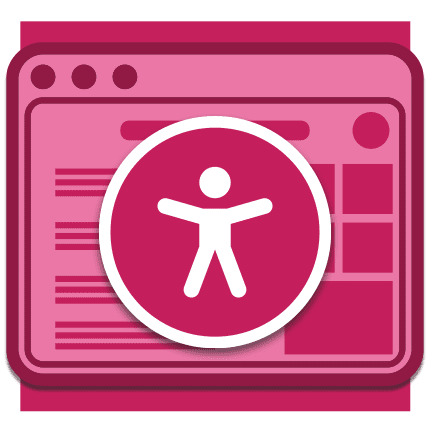PPC
AccessibleSEO | PPC Hero

The real-world impact of inaccessible channels and content is devastating for millions of people. Lack of equal access to information fosters extreme isolation. It silences far too many people, and yet the majority of site developers, content creators, and SEOs fail to do the basics to make their websites accessible.
In the early ‘90s, brands were FORCED to install wheelchair-accessible ramps, doorways, aisles, bathroom stalls, and more. Despite it being the right thing to do, businesses pushed back. In some instances, brands were forced kicking and screaming in and out of court and in the end would lose. Ultimately, many wound up paying more in legal fees and their integrity than the construction and renovation costs of simply doing the right thing. Today, such physical accessibility is commonplace, and unless you need to use accessibility features every day, they now go relatively unnoticed.
Accessibility Applies to the Web
Fast forward to the 2020s and history is repeating itself, just in the online sphere. Those who work on the web need to ensure all content we create is accessible for everyone. Brands need to step up and get serious about accessibility for everyone. Consider the scope of opportunity to help people with various abilities – it spans the entire user experience, most notably site usability and user-centered design. While the focus of such efforts should be on people with disabilities (visible and invisible), efforts put into web accessibility actually greatly benefit people without disabilities as well. Digital Accessibility bridges issues beyond physical disability such as geographic location, socioeconomic status, education, language, age, gender, and it levels the playing field for everyone when it is done right.

At a minimum, brands should strive for “AA” WCAG compliance. What is the WCAG? WCAG, pronounced “wuh-cag” or simply “cag,” stands for Web Content Accessibility Guidelines. The guidelines were developed through the W3C process by people and organizations with the goal to develop a single content standard to meet the accessibility needs of people, companies, and governments across the globe. WCAG compliance is graded essentially at three levels, delineated by single-A, double-A, and triple-A success criteria. The higher the level of compliance, the more accessible your site is to users with various abilities. Single-A notes the least accessible, while triple-A defines the most accessible level of compliance. Examples of a double-A compliance site include functionalities such as all non-text content, for instance:
- Tabbing functionality should allow browsing via a keyboard (tabbing through the site as opposed to clicking with a mouse, for example).
- Images should have alt tags or text that accurately describes the image.
- Videos should have captions/transcripts, should give users enough time to read the content, be able to slow or pause, etc.
- The text should be adjustable based on the user’s needs.
- Proper HTML protocols should be followed, including headlines (H2 headlines are a good example).
- Text links should make sense.
- Color contrast should have the correct ratio. Colorblind people often cannot see text or images because they cannot see certain colors adjacent to one another.
- Potentially seizure-inducing content should be avoided.
- Content shouldn’t be subject to one orientation, such as portrait view only.
Do you see all of the SEO elements your brand decided not to include in the time they took to develop the content? That’s harsh. Not only are these elements helpful in SEO, but they are also essential to rank.
Beyond those areas Accessibility wraps its arms around, US Census data estimates 1 in 5 – or 64 million – people in the U.S. have a disability of some sort. 28 million have an ability that affects the way they use the web, apps, and tools. This includes 19.9 million that have lifting or gripping difficulty/holding mobile devices; 8.1 million with vision difficulty; 7.6 million have hearing difficulty; 1.1 million have severe hearing loss. As our population’s Baby Boomers continue to age, the number of users with disabilities will increase.
Accessibility = Real $$$
The American Institutes For Research estimates the spending power of people with disabilities to be $490 billion in disposable income for workers aged 16 to 64. So if helping 1 in 5 people doesn’t spur your brand along, the potential revenue gains should!
Want more? Check out my session at HerConf. and we’ll review how to:
- Acquire a comprehensive understanding of what digital accessibility is and how it relates to search visibility.
- Build a business case for investing in ADA compliance based on data and litigation outcomes that will be shared.
- Cover the core five steps to ADA compliance and a better user experience, which I will spell out very clearly. I will also provide tool recommendations for successful implementation.
I’m super excited to dive into Digital Accessibility at HeroConf. 2022 in Austin, TX with ya’ll!















You must be logged in to post a comment Login